Glacier Bay
Casting off from Auke Bay, we partly motored, partly sailed to a place called Swanson’s Harbor about 25 nautical miles from town, tying up for the night to a float maintained there by the great State of Alaska. Several online reviewers complained of bugs at this spot but we didn’t find any. Actually, so far so good as far as bugs go. Even Jocelyn, who is a bug magnet, hasn’t had any trouble.
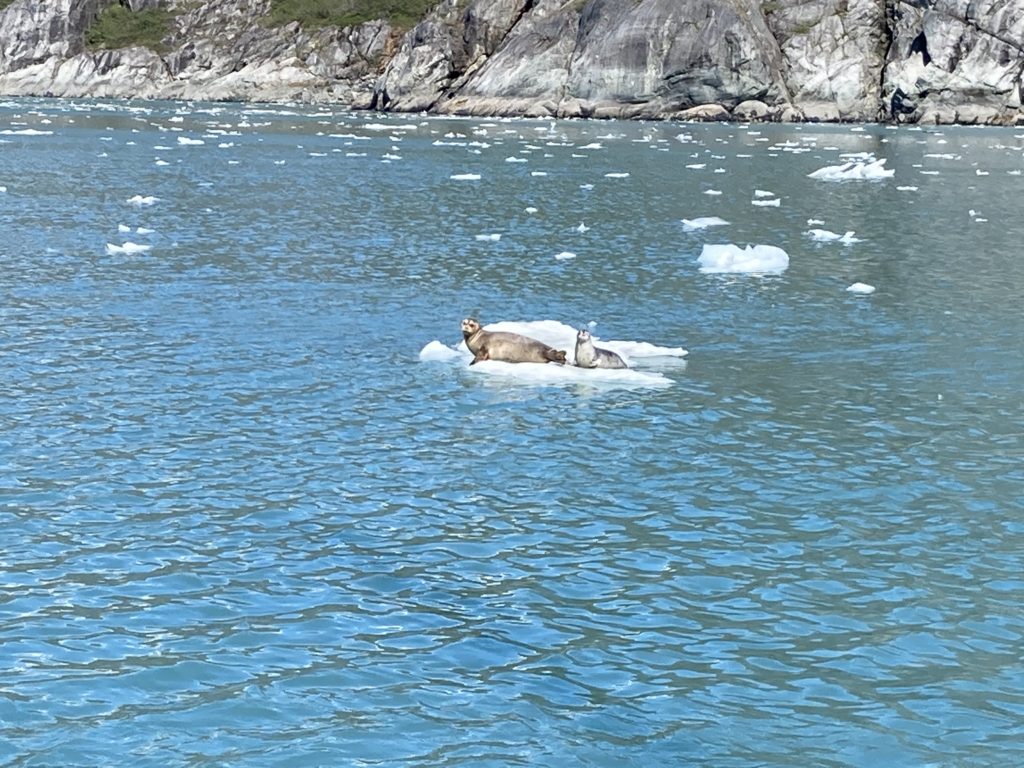
The next day, June 14th, is Kevin Smith’s birthday. We called him to wish him well. Also on this day, Flag Day, our permit to enter Glacier Bay begins. We had applied online for the permit 60 days earlier, having filled out all the proper forms and pledged to follow all the applicable rules, like watching two fairly lame “orientation videos” telling us to mind our P’s & Q’s while in the Park. Now I think I know why the Alaskans eschew Glacier Bay – too much red tape.
Despite the procedural folderol, June 14th will go down as a red-letter date in the annals of Windleblo history. Remarkably, after so many nautical miles, so many anchorages, so many crossings, so many winter layups, and even a pandemic-induced delay, we were finally going to fully complete the mission. Yes, Sweden to Alaska had been recorded. But it was always Sweden’s Gold Coast to Alaska’s Glacier Bay that was the entire mission. And on this day we were going to accomplish it.
As if to herald our achievement, a pod of about 10 Dall porpoises formed on our bow, playfully escorting us the last couple of nautical miles into the bay. I took a video of them and texted it to family and friends using the surprisingly strong cell signal we still enjoyed as we transited the Icy Strait. Once anchored in Bartlett Cove we dinghied ashore for reconnaissance.
In our ignorance, we had expected to find a remote wilderness setting at the Glacier Bay National Park Service headquarters. Maybe a couple of rangers, perhaps a few hardy souls about to head out into the bush. Surprisingly, at the top of the public dock ramp we found not only a full-service guest lodge but a bivy of tourists fresh off the shuttle from Gustavus (pronounced gus-TAVE-us), all busily consuming the free wifi, their heads buried in their phones. The lobby area was full of these folks, seemingly oblivious to the natural world immediately adjacent, apparently preoccupied with their next connection to transfer out. A parking lot seemed full of cars and trucks, something else we did not expect. Turns out, the headquarters is only nine miles down the paved road from Gustavus, easily reached by ferry from Juneau. Who knew?
After sussing out the scene, we took a brief hike on a well-maintained trail, ending at 4pm at an outdoor exhibit of one of the world’s few humpback whale skeletons. Ranger James told us the story of “Snow,” the humpback whale interred there, who was clobbered by a cruise ship 20 years ago and killed instantly. According to Ranger James, the NPS made lemonade out of lemons by collecting all of Snow’s bones after she decomposed on the beach, shipping them off to Maine where a specialist treated and preserved them, and finally returning them to Glacier Bay for assembly into the exhibit we now viewed. During the Q&A, as opportunities for whale watching in the bay were reviewed, one couple commented on their recent sighting of mating grizzlies in a nearly cove. Jocelyn and I resolved to keep our eyes peeled for similar sights.
One plus to all this civilization…we asked at the front desk if we could have some ice to take with us to the boat. A friendly Park Service employee obliged, sending us away with more than enough ice to chill our vodka tonics. We consumed them in the cockpit as the sun slowly settled in the west, toasting our good fortune and celebrating the accomplishment of having sailed the Windleblo into Glacier Bay.
The rain fell as we weighed anchor the next morning. Now, we would leave civilization behind. From Bartlett Cove, we pointed Windlebo north into the bay. This being a national park, of course there were more rules. We had to stay one nautical mile from shore for the first several miles to keep from disturbing whales and other wildlife. Apparently, there is a greater chance of impacts near the mouth of the bay where the water is shallower and the bay narrows. Once clear of Sitakaday Narrows, the chance for disturbance diminishes and the rules lessen.
A following breeze allowed us to turn off the motor and sail wing-on-wing for much of the day, a real joy given the lack of good sailing conditions around here. We only saw a couple of other boats during the day. Through strict regulation, only 25 recreational vessels are permitted to be in the bay at any one time. One has to leave for another to be allowed entry. A handful of commercial and research vessels are also allowed, so on any given day only about 30 vessels ply the bay’s waters. Due to COVID, we have the good fortune of being here when there are no cruise ships. They don’t start up again until next month, making this a special time to visit.
So even though our chosen destination was said to be one of the most popular, we hoped to have it to ourselves. Sure enough, as we approached Blue Mouse Cove around mid-afternoon no other boats could be seen. Named after a “well-known theatre in New York” according to one of our cruising guides, Blue Mouse Cove is reputed to offer good wildlife viewing opportunities. We watched a couple of whales feeding nearby as we entered the cove, spouts blowing and flukes flying. Once inside, a harbor seal showed us the way to the anchor spot. In the evening, we watched a black bear forage on the shore nearby. Who knows, maybe we’ll eventually see some humping grizzlies, right?
What we didn’t fully realize, though, was that something much more scintillating than fornicating Yogis awaited us to the north. For after Blue Mouse Cove we entered the real Glacier Bay. The part most clearly sculpted by ice, with tons and tons of it visibly grinding mountains into powder and calving massive towers of itself into the sea.
Devoted followers of this blog may recall words uttered by crewman Phil Dear upon experiencing a late-night performance of the world-renowned DJ Tiesto at Ibiza’s Pasha’s night club as part of shore leave from the Windleblo in summer 2012. The morning after, when asked how the evening went, with a starry look in his eyes, he said, “life changing.”
Now on the other side of witnessing Glacier Bay’s glaciers first hand, I am left with a similar characterization of the experience. Like staring into a fire or pondering the Milky Way from high up in the Rockies, watching the tidewater glaciers in action fits the bill for awe inspiring, goosebump inducing, and, yes, life changing qualifiers. One cannot come away from the experience without revisiting primal questions “what is the meaning of life?” “why is there air?” “how big is the universe?” and the like. Texas has nothing on Alaska for biglyness; if there was ever any debate on this point, simply trot out the glaciers and case closed.
Our glacier witnessing began 12 nautical miles north of Blue Mouse Cove in Reid Inlet where we anchored about a mile across the water from the glacier. All trees had disappeared in those 12 nautical miles and we now found ourselves in an alpine-like environment characterized by rock and low scrub. The steep-sided U-shaped valley contained the glacier, which rose upslope to the southwest. After anchoring in the northwest corner of Reid Inlet, we launched the dinghy to cover the last mile, landing at low tide to walk along the edge of the glacier’s lateral moraine, further progress onto the glacier itself impeded by a fairly wide ice-cold stream of melt water. The glacier had receded several hundred yards from the seawater so even at high tide later the base was not inundated. Consequently, we did not see any calving.
But Reid Glacier was just a warm up for what was to come. The next morning dawned bright, warm, and clear. As at Tracy Arm, it seemed a Colorado bluebird day was again ordered up for our glacier viewing. A further six nautical miles north, we encountered Lamplugh Glacier. Trolling slowly by, the Windleblo provided an excellent platform for viewing the glacier front from about ½ nautical mile away. We were especially impressed by the mountain peaks that served as backdrop for this glacier.
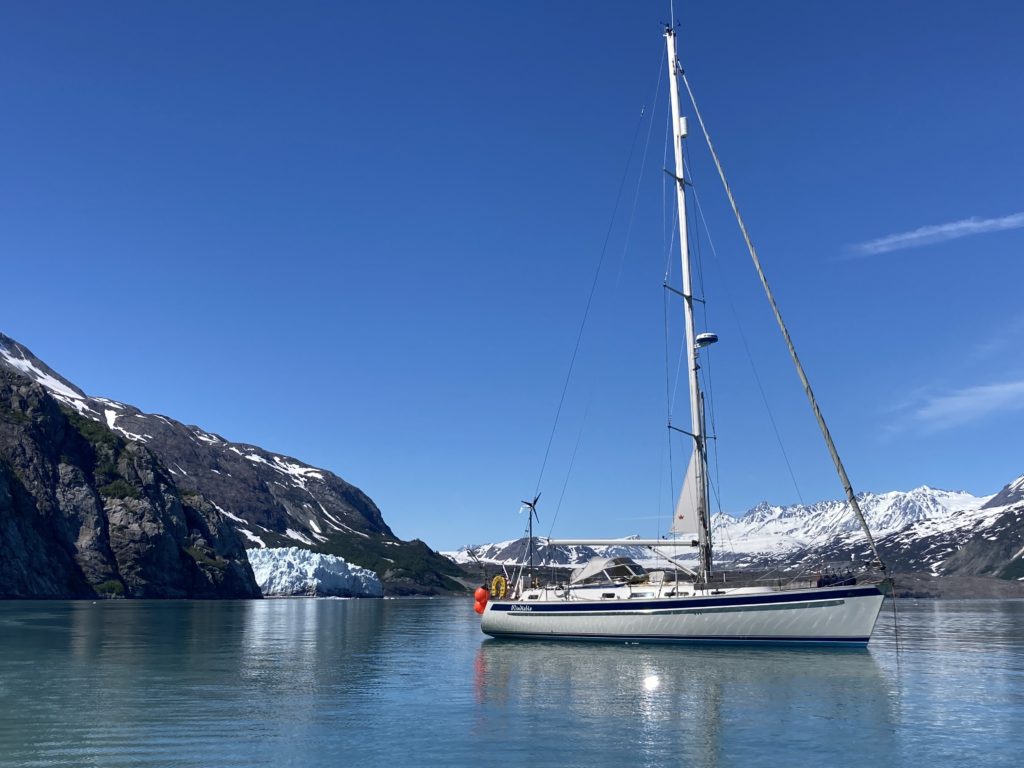
Seven nautical miles further north, we anchored Windleblo in thick glacial mud and launched the dinghy for a ride one more nautical mile at low tide to a lateral moraine bench adjacent to Margerie Glacier. The bench was littered with ice blocks that had calved from the glacier only to be stranded on the bench as the tide went out. Wandering through the ice blocks, we were mesmerized by the groaning and cracking of the ice as the glacier pushed into the sea. Chunks of ice, some small, some large, plummeted down the glacial front to crash into the sea with a boom. For over two hours, we stared agog at the spectacle, rewarded a few times by a monster calving when a massive tower of ice crashed into the sea creating a huge wave that washed far enough up on the shores of the bench to cause us to seek higher ground.
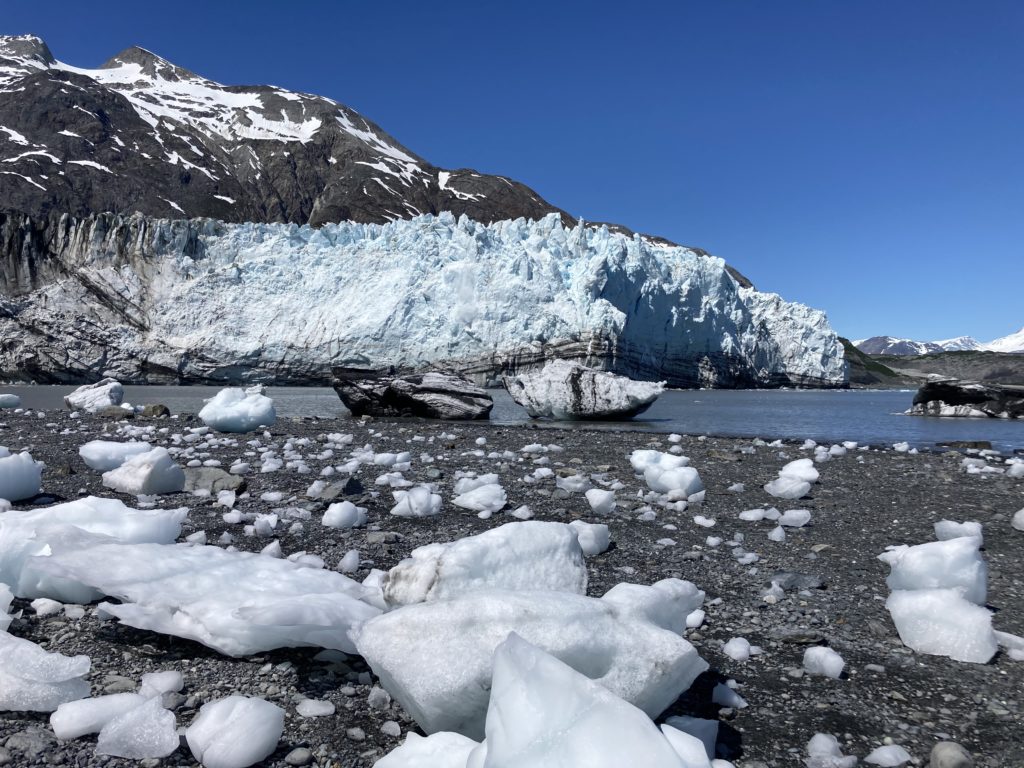
The tide finally turned and the bench started to become covered again as we retreated to the dinghy and, after looping past the glacier front for a final viewing from a safe distance, returned to the Windleblo. All through the evening, we heard further cracking and groaning of the glacier, with the occasional big boom signifying a massive calving, then the rolling of the boat as the wave generated by the falling ice reached us a mile away.
As we motored slowly away in the stillness of the next morning, the surface of the water like glass, we could still hear the glacier talking to us, keeping us mindful us of the awesome power and cosmic energy of Mother Nature and the need to be humble in her presence.
After our up close and personal glacier encounters, our remaining nights in Glacier Bay seemed anti-climactic. Still, relative to garden variety wilderness experiences they were quite impressive. We took in tidal cycles at a North Sandy Cove anchorage, heard the barking and growling of a sea lion colony on South Marble Island, and enjoyed more forest hikes back at Bartlett Cove as our time in the Park came to a close. We even had a close whale encounter as three humpbacks, a mother and two juveniles, were feeding right near our boat as we lay at anchor in Bartlett Cove. Another broached repeatedly for us as we rounded Point Gustavus the next day, bidding us fair winds as we exited the protected whale waters of Glacier Bay National Park and Preserve.
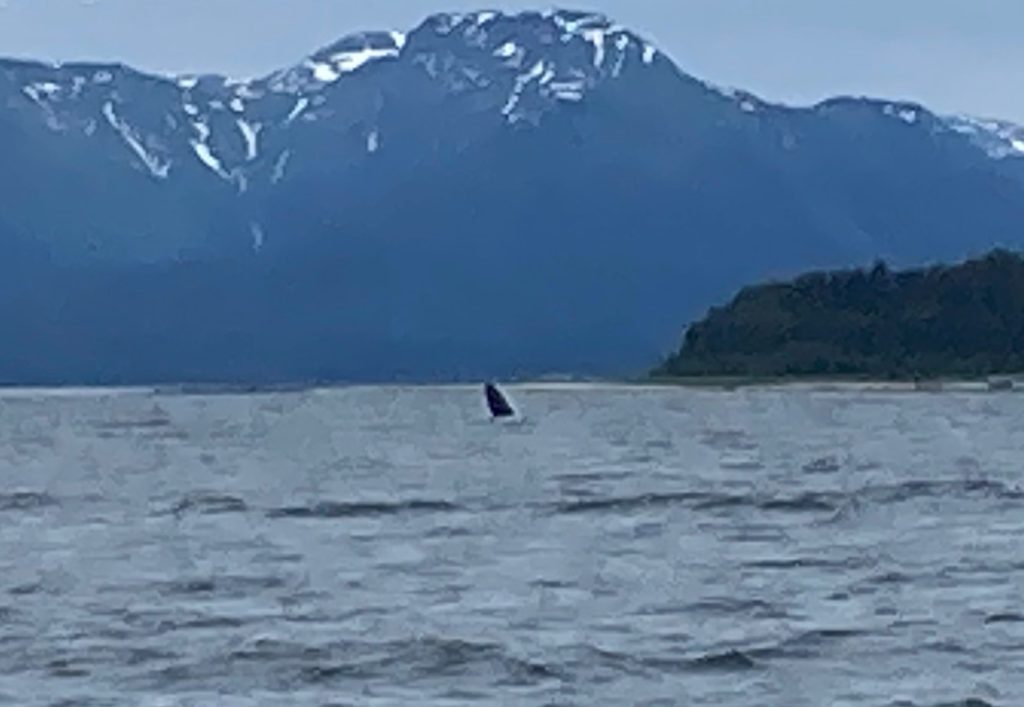

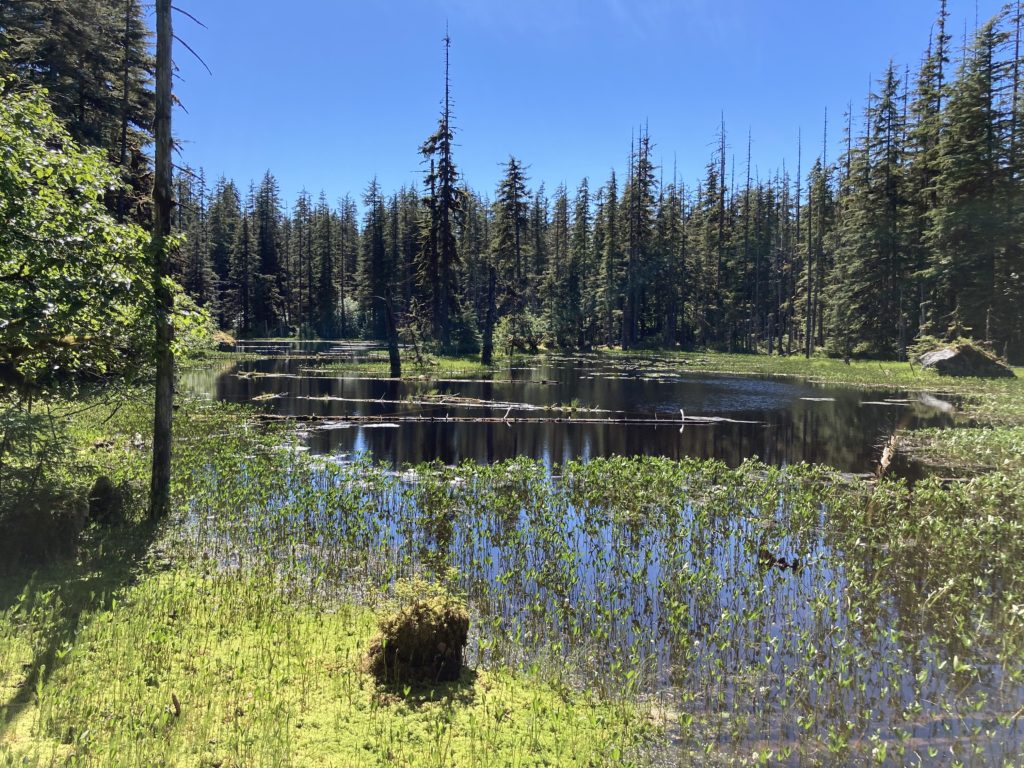
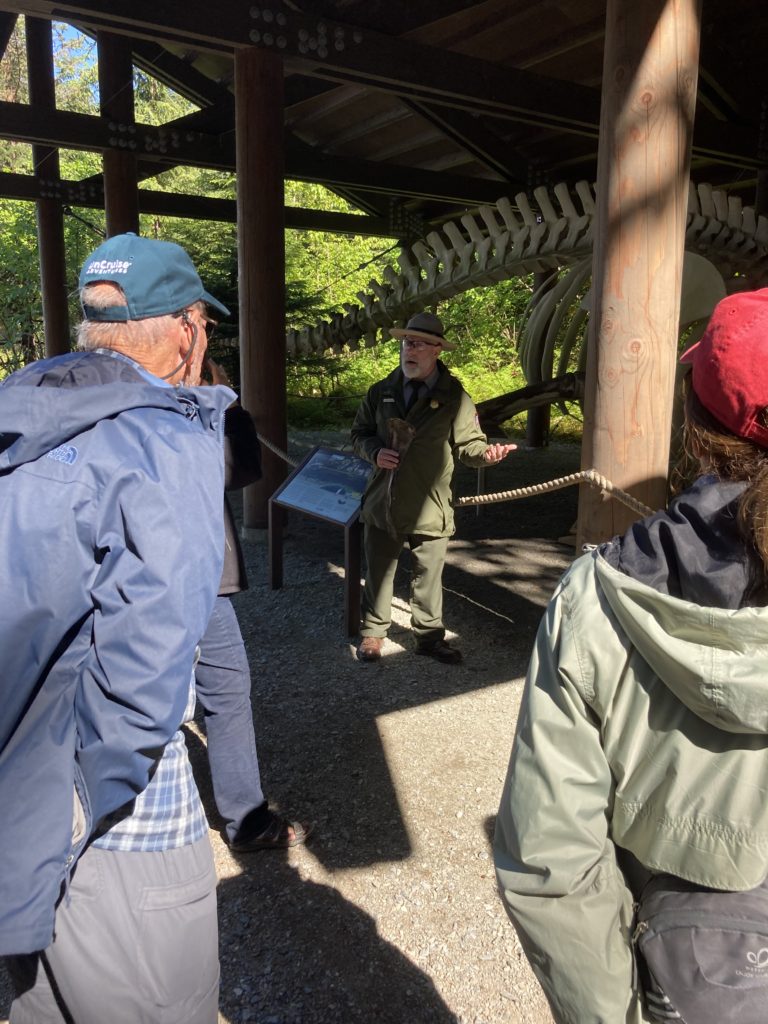
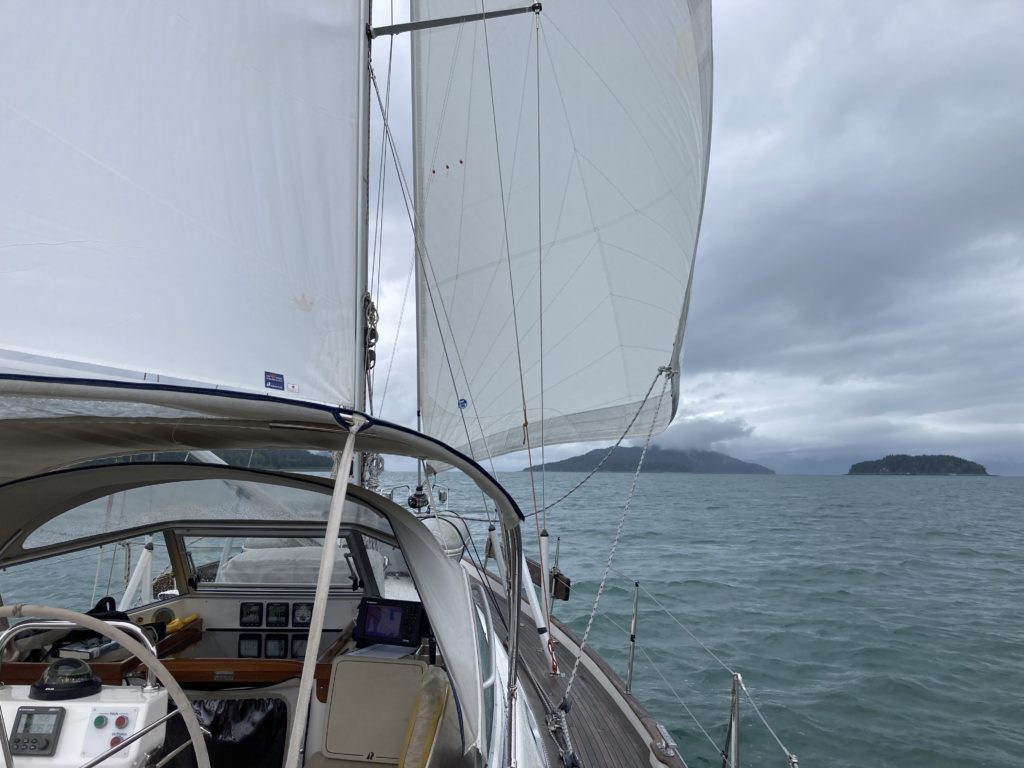
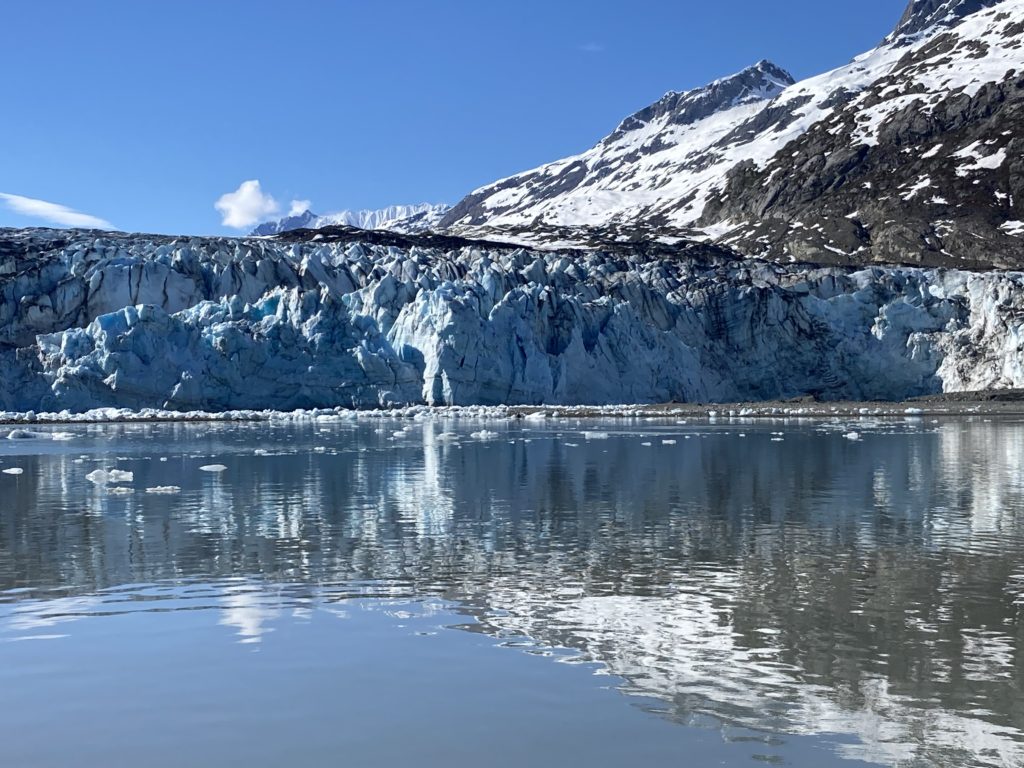
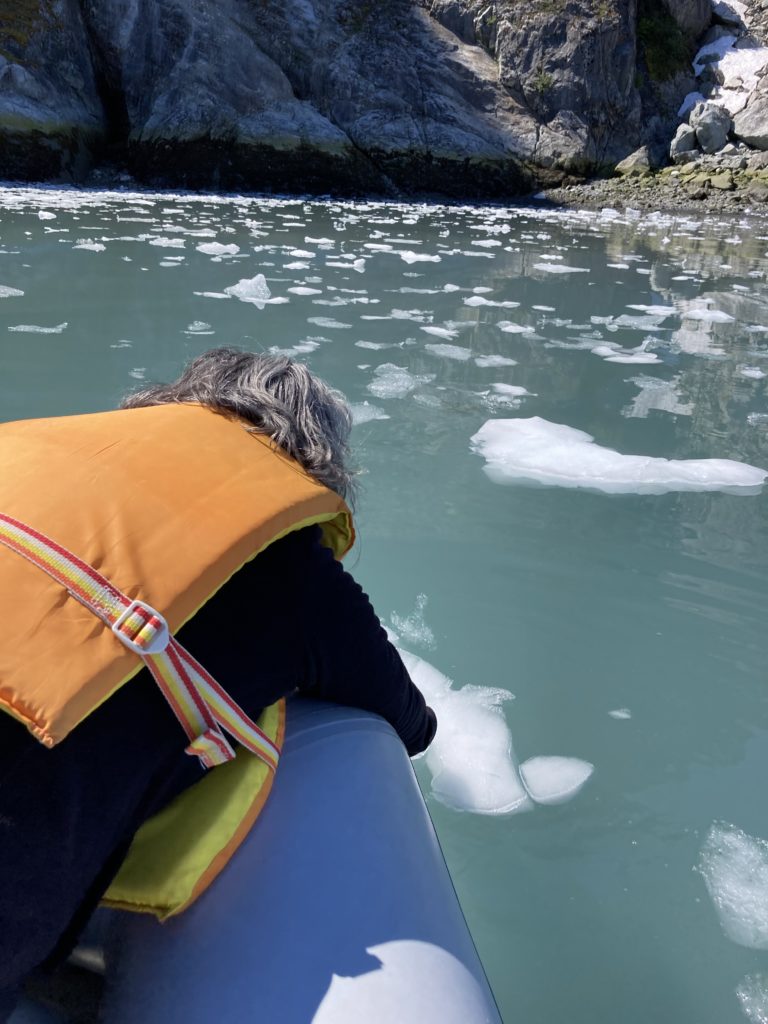
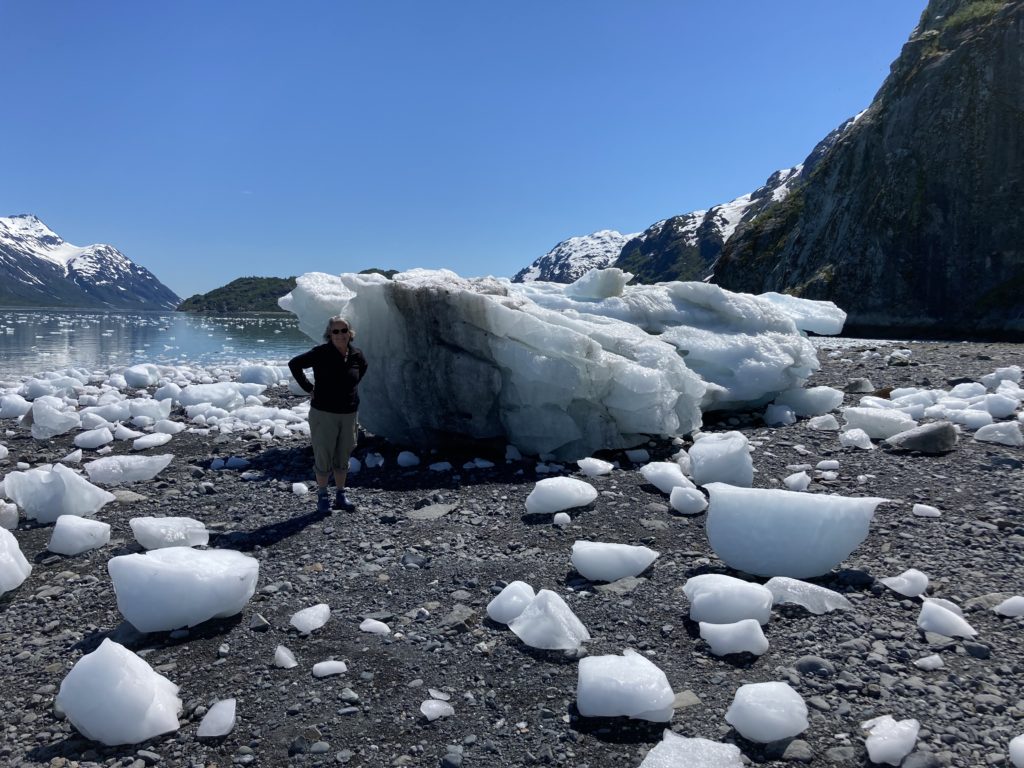
Comments
Glacier Bay — No Comments
HTML tags allowed in your comment: <a href="" title=""> <abbr title=""> <acronym title=""> <b> <blockquote cite=""> <cite> <code> <del datetime=""> <em> <i> <q cite=""> <s> <strike> <strong>